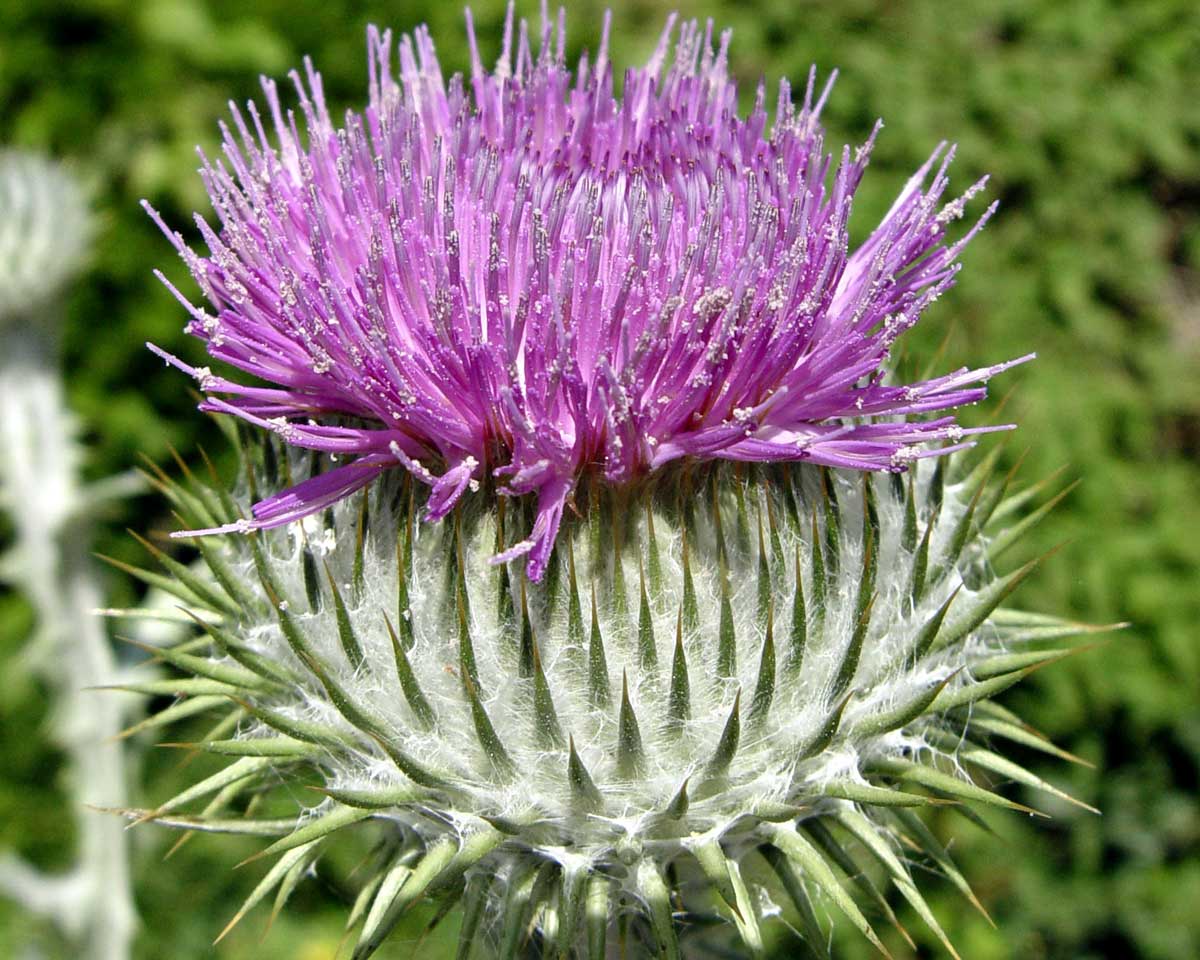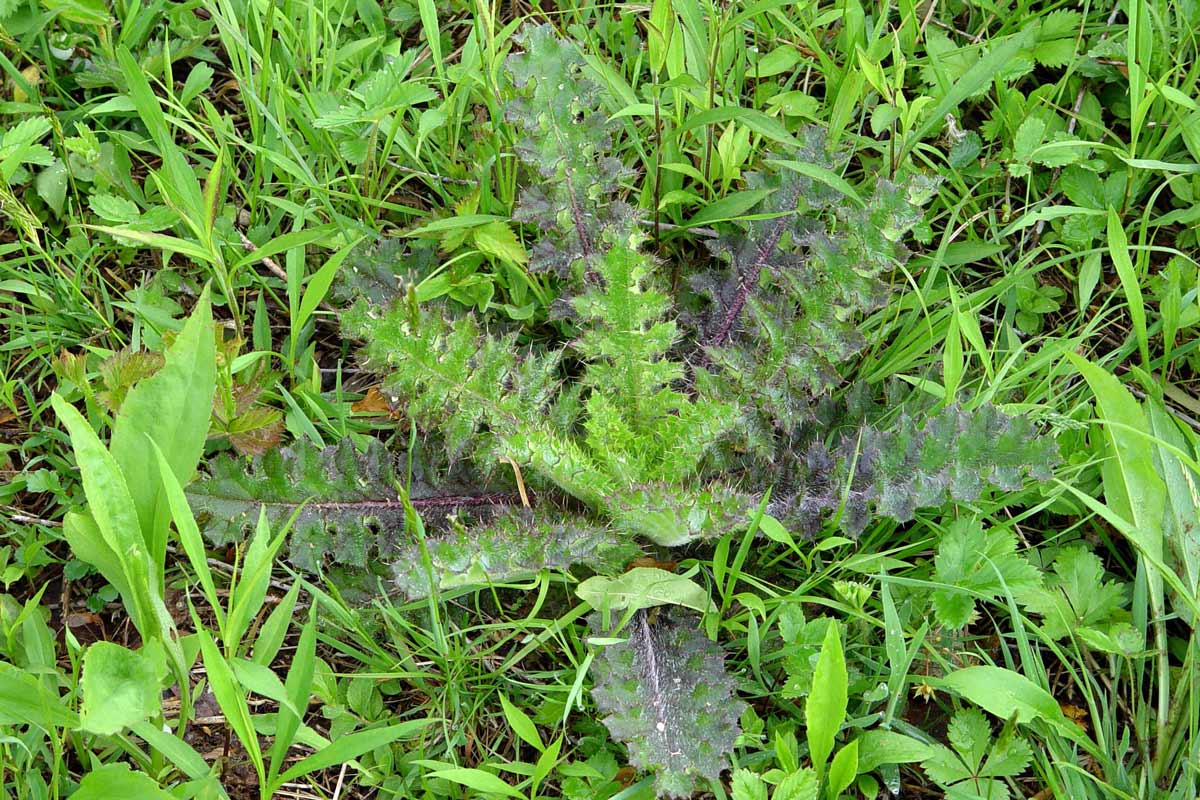Weed or Wildflower? Summer Weeds that Look Like Native Plants
Killing native wildflowers by mistaking them for weeds can be detrimental to the ecosystem. Here are six common summer weeds and how to tell them apart from similar native plants.
Thistle is one of the easiest weeds to identify but also one of the worst weeds to have for the same reason – the plant’s prickly spines.
A hallmark of this large family of plants is that its leaves – and sometimes its stems as well – are lined with skin-piercing little “jaggers.” Anyone who’s tried to pull a thistle with bare hands quickly realizes which weedy enemy they’ve encountered.
The tricky question about controlling thistle revolves around whether the type you’re seeing is a native species or not.
Native thistles are generally kept in check by local insects and diseases, and their flowers and seeds serve as valuable nutrients to birds, bees, and other pollinators. Examples are swamp thistle, wavyleaf thistle, field thistle, and tall thistle, all of which are native “wildflowers” in different parts of the U.S.
On the other hand, several non-native thistle species have become invasive weeds – seeding and spreading harmfully enough to earn spots on many states’ noxious weed lists.
Four kinds of non-native thistles in particular are troublesome throughout most of the U.S. – Canada thistle (Cirsium arvense), bull thistle (Cirsium vulgare), musk or “nodding” thistle (Carduus nutans), and Scotch thistle (Onopordum acanthium).

Thistle flower. George Weigel
Thistles are stout plants that, in addition to their telltale spiny leaves, produce distinctive round, pinkish-purple, pincushion-like flowers. These emerge in summer from pineapple-like buds at the tips of the stems.
Unfortunately, there’s no single trait that separates a native thistle from an invasive, non-native one. The only way to tell what thistle you have is to consult a weed-identification field guide or search online for the differences in leaf shape, plant size, flower makeup, and other traits that set each thistle apart from one another.
One difference among the four worst weedy thistles is that three of them are biennials (plants that grow from seed the first year, then flower and die in the second) and one is a winter-hardy perennial.
Bull, musk, and Scotch thistles are all biennials, which form low rosettes of prickly leaves during their first summer and fall. Those rosettes overwinter, then send up flower stalks that typically reach three to four feet tall – even up to 10 feet for the particularly spiny Scotch thistle.
The flowers produce seeds that are spread by wind to create new plants the following year. Some thistle plants can produce more than 100,000 seeds per plant.
Canada thistle is a true perennial that dies back in winter but comes back with a vengeance the following spring. This one is especially aggressive because, in addition to producing seeds, its roots colonize the surrounding soil. Creeping horizontal roots that can survive winter underground send up shoots that quickly form dense patches.

Thistle rosette in a weedy patch.. George Weigel
Canada thistle is one of the most difficult weeds to control because if you don’t kill or dig all of its roots, even small pieces left behind will send up new shoots. Tilling a bed of Canada thistle can even worsen an outbreak by distributing live root pieces.
Mowing or repeated weed-whacking is helpful in heading off flowers that would produce new seeds, but these practices are usually not enough to discourage an existing Canada thistle colony.
With biennial bull, musk, and Scotch thistle, eliminating flowers will prevent next year’s seeding, and the existing plants usually die after the second season. However, seeds in the soil – or new seeds blowing in – often keep a biennial thistle outbreak alive.
For biennial or perennial thistle, spot-spraying plants with a broad-leaf herbicide that’s labeled for thistle control is an effective way to kill thistles, roots and all. Fall and early spring are two effective time frames to spray. Two or three applications sometimes are needed before a thistle plant finally gives up.
In the lawn, most granular broad-leaf weed-killers and “weed and feed” products are labeled for thistle control.
Preen Lawn Weed Control, for example, kills all four of the above weedy thistles as well as more than 200 broadleaf lawn weeds. Early fall provides one of the best control windows when thistles are attempting to store nutrients heading into winter dormancy.
Preen One Lawncare also is labeled for the control of all four weedy thistles and can be applied in early fall. It fertilizes in addition to killing weeds, and when applied in spring or summer, also controls crabgrass.
As with all weeds that spread by seeds, the best defense is preventing them from getting started in the first place.
Disturbing the soil as little as possible is one strategy that avoids stirring up dormant, buried seed that will germinate in the warmer, lighter conditions of the soil surface.
A second strategy is covering as much bare soil as possible either with mulch, groundcovers, or other plants that deny weeds space to grow.
And a third defensive strategy is to regularly patrol beds so weeds can be dug or spot-sprayed with an herbicide when they’re young and most vulnerable. Dispose of Canada thisle in the trash. Don't add pulled thistle plants and flowers to the compost.